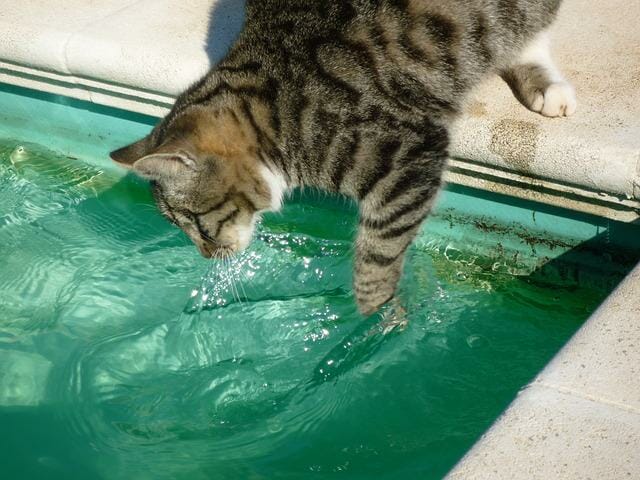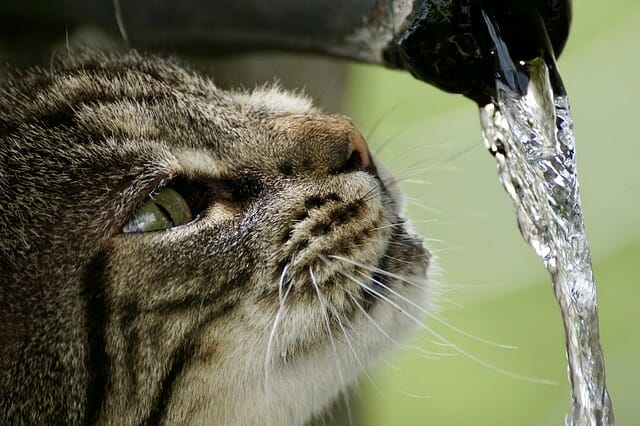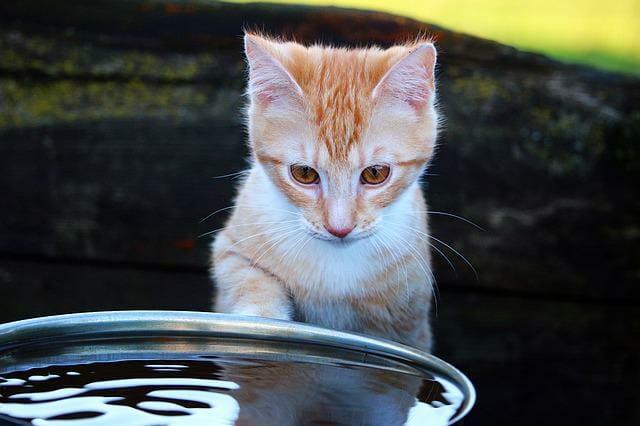Why Are Cats Afraid of Water: Reasons Why Cats Are Afraid of Water and How to Deal With of It
Cats’ are scared of water because of their instinct. Their instinctual behavior often influences their interactions with their environment. As predators, cats are generally skilled at hunting small prey, such as mice and birds, and they have evolved to be agile, stealthy, and quick. Their instincts also dictate how they interact with other cats, marking their territory and seeking safe places to rest and hide.


Table of Contents
Reasons Why Most Cats Don’t Like the Water
Sensitivity to Temperature
Cats are very sensitive to changes in temperature, and their bodies are adapted to maintain a consistent body temperature. When cats get wet, their fur becomes heavy and takes longer to dry, leading to a drop in body temperature that makes them feel cold, according to Oakland Veterinary Referral Services. This can make them uncomfortable, and they may try to avoid water to prevent this from happening.
Moreover, cold water can cause the blood vessels near the skin surface to constrict, which can reduce the blood flow to the skin and fur. This reduces the insulation capacity of the fur, and the cat can lose heat more easily. In addition, wet fur can make a cat more vulnerable to skin infections, which can be uncomfortable and painful.
Negative Past Experiences
Negative past experiences can also contribute to a cat’s fear or avoidance of water. For example, if a cat has had a traumatic experience with water, such as being forced into a bath or getting sprayed with a hose, it may develop a lasting fear of water.
Cats are highly intelligent animals and have strong associative memories. If they associate water with discomfort or danger, they may become wary or frightened of it in the future. This is especially true if the experience was particularly traumatic or painful.
It’s important to note that cats are individuals and may react differently to different situations. For example, while some cats may have a strong aversion to water due to negative past experiences, others may be more open to getting wet. So it’s important to approach each cat individually and be mindful of its specific preferences and sensitivities.
Lack of Exposure
Lack of exposure or socialization can also contribute to a cat’s fear or avoidance of water. For example, suppose a cat has yet to be exposed to water positively and gradually during their critical socialization period (between two and seven weeks of age). In that case, it may be more likely to develop a fear of water.
Cats with little or no exposure to water may be more likely to react fearfully or defensively when confronted with water. They may not know how to swim or handle themselves in water, which can lead to anxiety and distress.
However, even cats not exposed to water during their critical socialization period can be gradually introduced to it positively and gently. As a result, many cats can learn to tolerate and enjoy the water with patience and proper training.
Discomfort


Another reason why cats may be afraid of water is that it can cause them discomfort or anxiety. For example, cats are fastidious animals that groom themselves frequently and thoroughly, and water can disrupt their usual routine and hygiene.
Water can also make cats feel vulnerable and exposed, triggering their instinctual fear response. For example, when cats feel threatened or uncomfortable, they may try to escape or defend themselves, which can lead to them scratching or biting their owner or handler.
Cats have sensitive ears; water entering them can be uncomfortable and disorienting. The sound and sensation of water can be overwhelming and frightening for some cats, especially if they have never been exposed to it.
Vulnerable
Cats may also fear water because they feel vulnerable in or around it. Cats are natural predators, but they are also prey animals, and their instincts tell them to be wary of any situation where they might be at a disadvantage.
Water can make cats feel vulnerable because it limits their mobility and makes it more difficult for them to escape or defend themselves if necessary. In addition, water may be an unfamiliar and unpredictable environment for indoor cats, increasing their anxiety and fear.
Additionally, cats may fear water because they associate it with negative experiences, such as being bathed or sprayed with water as punishment. If a cat has had a traumatic experience with water in the past, it may become fearful or avoid it in the future.
Grooming Preferences
Cats are fastidious animals that groom themselves frequently and thoroughly. They are equipped with rough tongues covered in tiny barbs, which they use to remove loose fur and debris from their coat. Cats can usually keep themselves clean and well-groomed without human intervention.
However, some cats may have grooming preferences or difficulties that require assistance. Long-haired breeds, for example, may require more regular grooming to prevent mats and tangles in their fur. For example, older cats or cats with arthritis may have difficulty reaching certain areas of their body, such as their hindquarters. In addition, they may benefit from occasional grooming sessions to keep them comfortable and clean.
If you are unsure about your cat’s grooming preferences or abilities, observing their behavior and physical condition is important. For example, signs that your cat may require grooming assistance include excessive shedding, matting or tangles in their fur, and skin irritation or inflammation. If you notice any of these signs, consulting with your veterinarian or a professional groomer may help determine the best course of action for your cat’s needs.
Tips to Make Your Cat Love Water


- Start Slowly: Begin by introducing your cat to water in a slow and controlled way. Use a small amount of water in a shallow dish and let your cat explore it at their own pace.
- Use a Toy: To make water more appealing to your cat, add a toy like a floating ball or a toy fish. This will encourage them to play in the water and associate it with fun.
- Positive Reinforcement: When your cat shows interest in the water, offer them a treat or praise. This will reinforce the idea that water is a positive thing.
- Gradually Increase Water Depth: Once your cat is comfortable with water in a shallow dish, gradually increase the depth of the water. Always keep an eye on your cat to ensure it can handle it.
- Use Warm Water: Many cats prefer warm water, so consider using warm water in a basin or bathtub when introducing your cat to water.
- Make it a Regular Routine: Incorporate water play into your cat’s routine. This will help your cat become more comfortable with water, and you will look forward to the experience.
